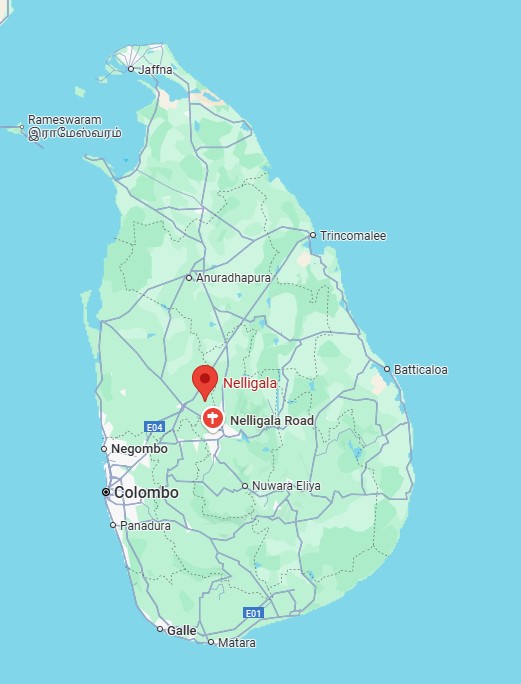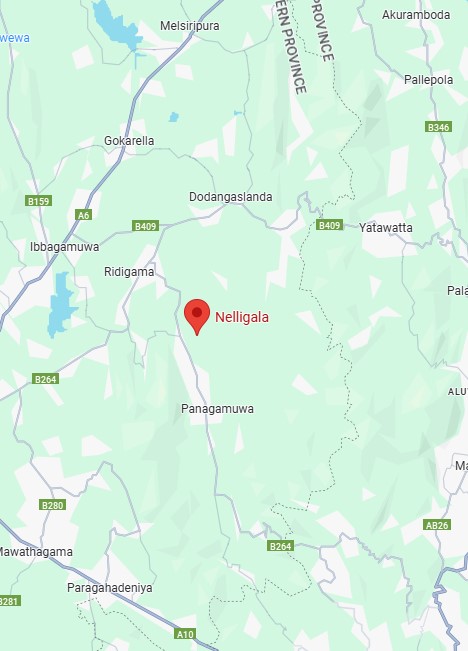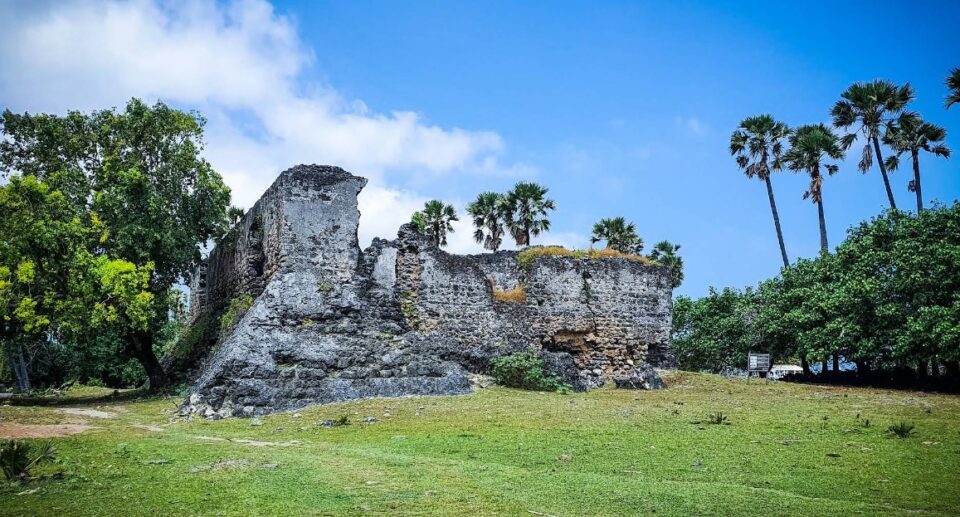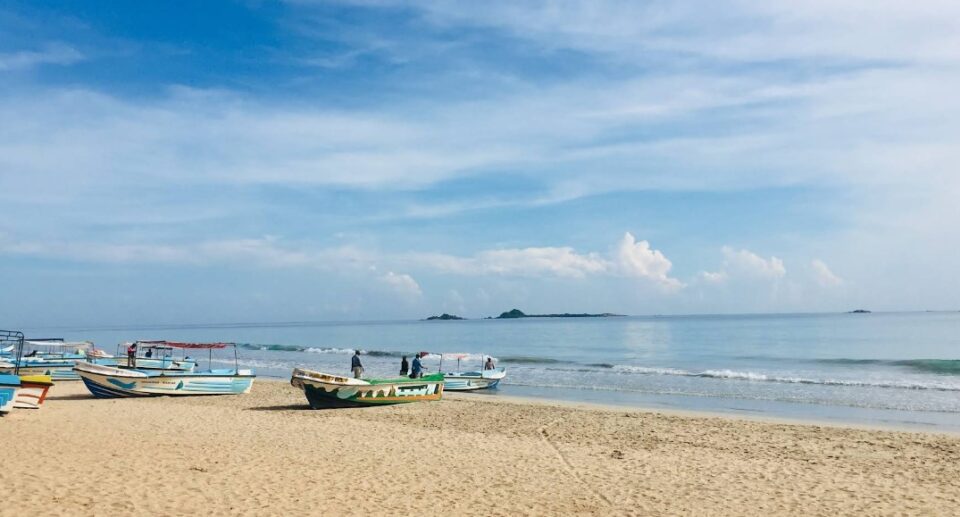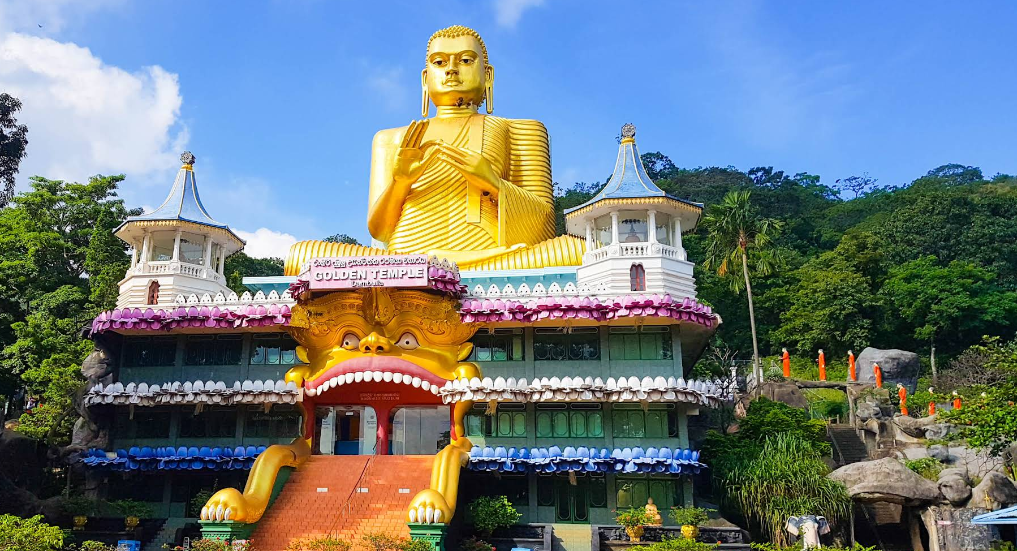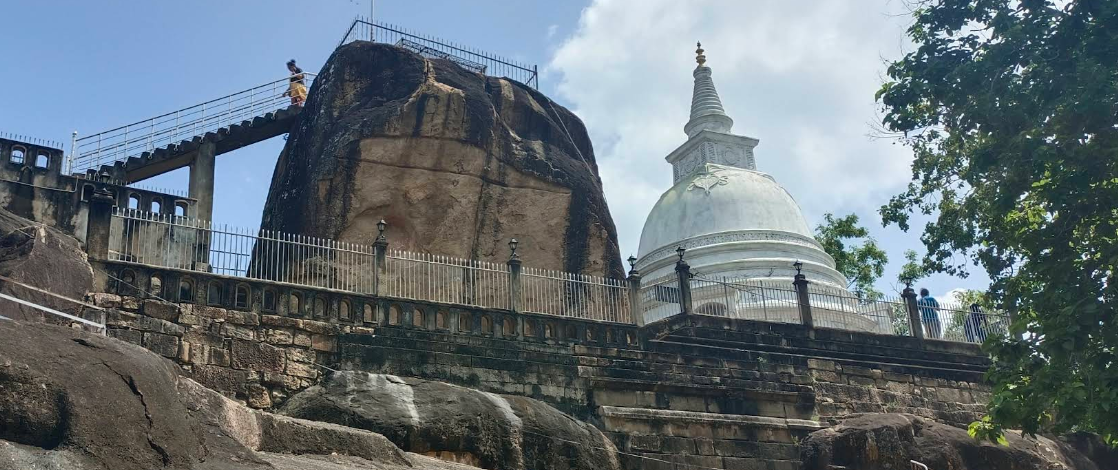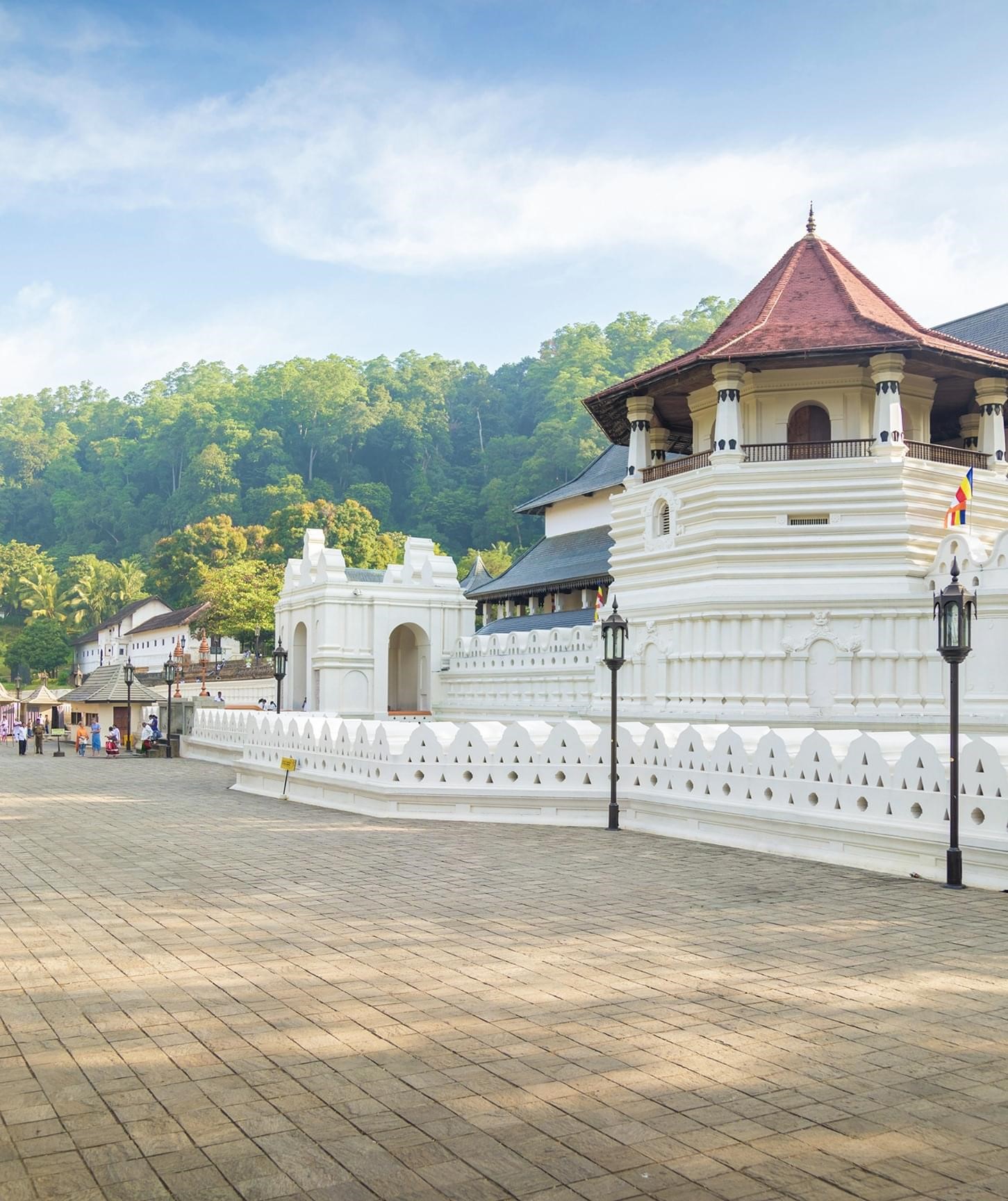Nelligala International Buddhist Center: A Modern Temple Above the Clouds
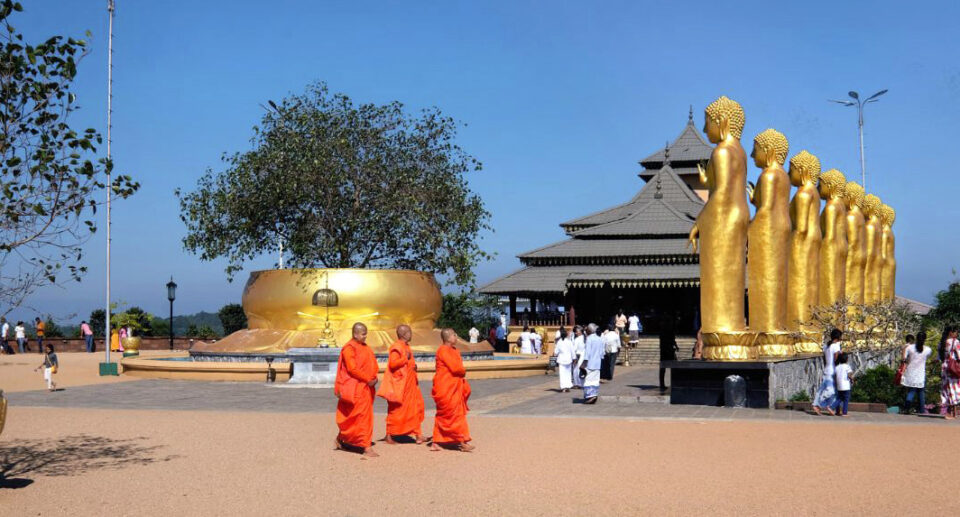
Perched atop the Nelligala Mountain in the Kandy District of Sri Lanka, the Nelligala International Buddhist Center is a stunning union of natural and spiritual beauty. Although much newer than Sri Lanka’s historical temples, Nelligala has fast become one of the country’s most visited religious and tourist attractions. Offering panoramic views of the Central Highlands, golden stupas glistening in the sun, and a serene atmosphere supportive of meditation, Nelligala Temple is an oasis of tranquility and inspiration.
This essay explores the origins, religious significance, architectural features, cultural impact, and visitor experience of Nelligala Temple, a new star in Sri Lanka’s spiritual and tourist landscape.
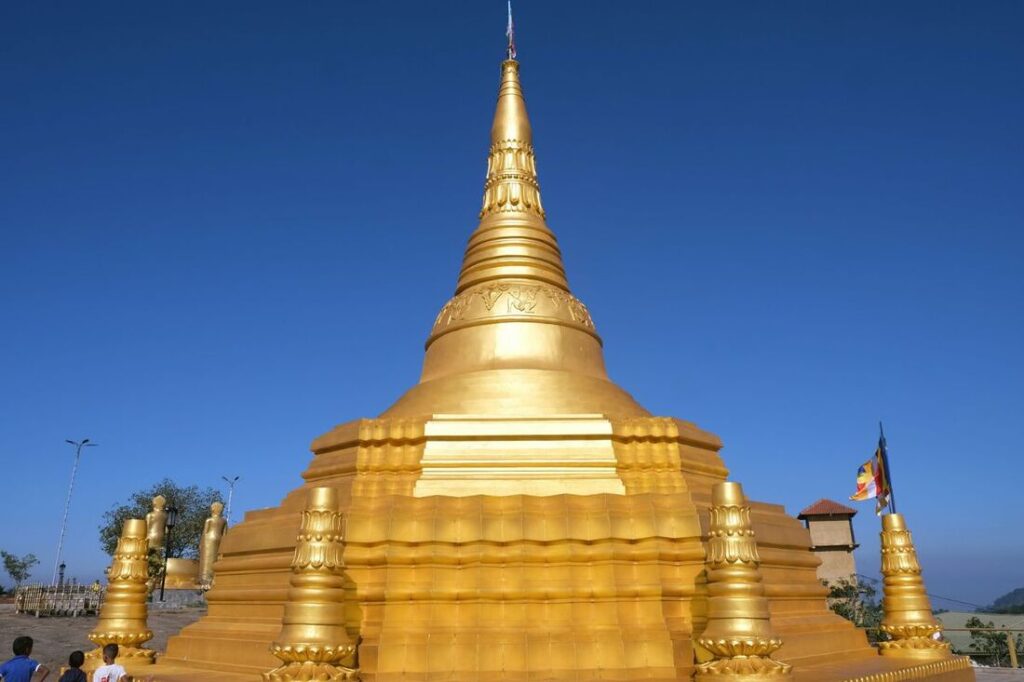
Origins and Development
Nelligala International Buddhist Center opened in 2015 as a Buddhism propagation project, to enhance mindfulness practices, and to provide a serene location for devotees and visitors to access their inner selves. Located in Muruthalawa, just 13 km away from Kandy, the temple was built on land that was previously underused and surrounded by forested hills.
Under the guidance of Buddhist monks and public philanthropists, Nelligala was developed under the dual vision of creating a temple of peace and a cultural hub that would be an attraction for both local and international tourists. Within a period of a few years, the site transformed from a forest-covered hilltop to a magnificent worship, meditation, and scenery attraction center.
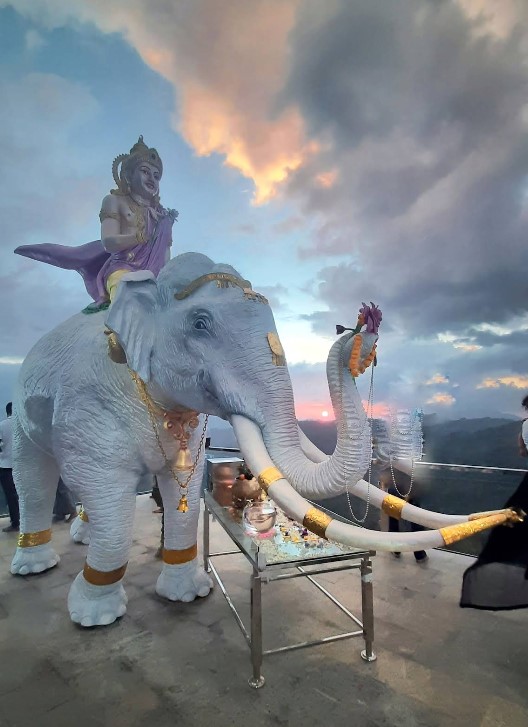
Spiritual Significance
Essentially, Nelligala Temple is a Buddhist temple and meditation center. It follows Theravāda Buddhist teaching, the most widespread Buddhist tradition in Sri Lanka.
Some of the primary religious elements include:
Sacred Bodhi Tree: A sapling from the Anuradhapura Sri Maha Bodhi, the tree symbolizes enlightenment and spiritual growth.
Sacred Relics: The temple houses relics of Lord Buddha, making it a pilgrimage site for people from across the country.
Stupas and Shrines: Golden stupas, shrines of deities such as Kataragama and Natha, and serene Buddha statues create an atmosphere that is spiritually enriching.
Pilgrims come not only to worship but also to engage with sil programs comprising meditation, chanting, and Dhamma discussions. The temple promotes Buddhist values of compassion, mindfulness, and inner peace.
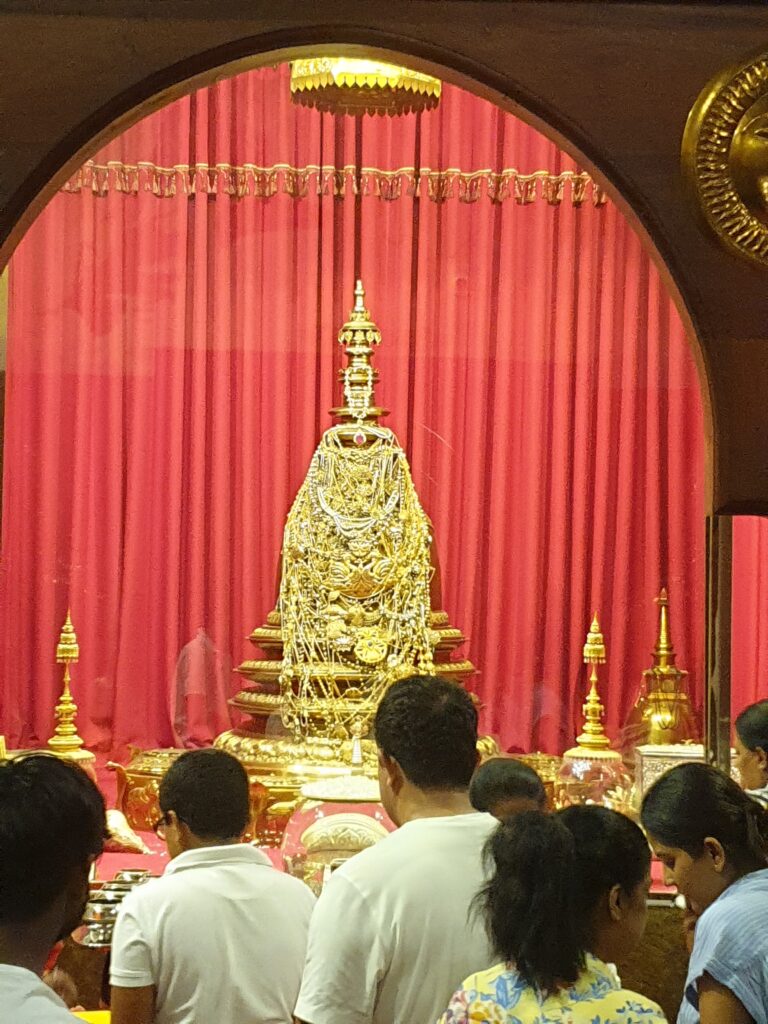
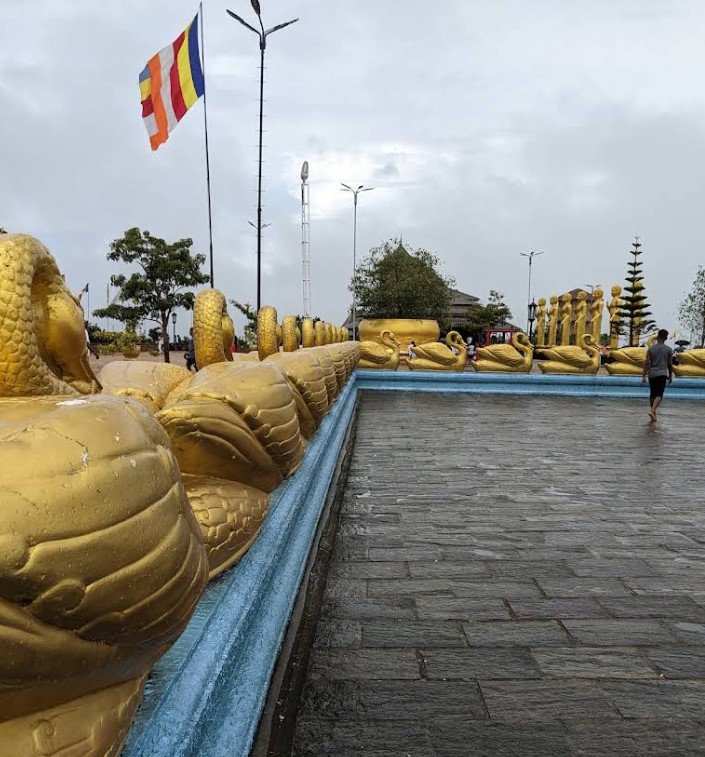
Architectural Features
The architecture of Nelligala is modern yet deeply symbolic, incorporating traditional Buddhist aesthetics with modern design and materials. Some of the highlights include:
Golden Stupas
The most striking feature of Nelligala, perhaps, is its golden stupa (dagoba), which glows in the sunlight. Its radiance symbolizes purity and the value of the Dhamma.
Giant Buddha Statues
The temple houses a number of giant Buddha statues in various poses, including Samadhi (meditative), Abhaya (fearless), and Dhammachakka (teaching) mudras. The statues are serene and graceful, representing different aspects of the Buddha’s teachings.
Hilltop Layout
Situated at an elevation of more than 600 meters, the temple offers 360-degree panoramic views of nearby attractions, including: Sri Pada (Adam’s Peak) Hanthana and Knuckles mountain ranges,Alagalla Rock
The layout as a whole is designed to inspire awe as much as serenity.

Modern Touches
The temple is easy to approach and a joy to behold with clean courtyards, paved paths, and neatly landscaped gardens. Despite its grandeur, there is still an air of simplicity and sanctity about the temple.
A Pilgrimage and Tourist Center
Nelligala is both a tourist spot and a pilgrimage center. It receives thousands of visitors each month who go there to view its beauty, meditate, and take in the beauty of the mountains.

What is unique about Nelligala is that it serves different needs in different ways: To the devotees, it’s a site of merit and prayer. To the tourists, it’s a photo stop and cultural experience. To the wellness seekers, it’s a haven of quiet contemplation.
The temple is especially popular on Poya days, Vesak, and Poson festivals when the surroundings are illuminated with lanterns and lights, creating a spectacular sight.
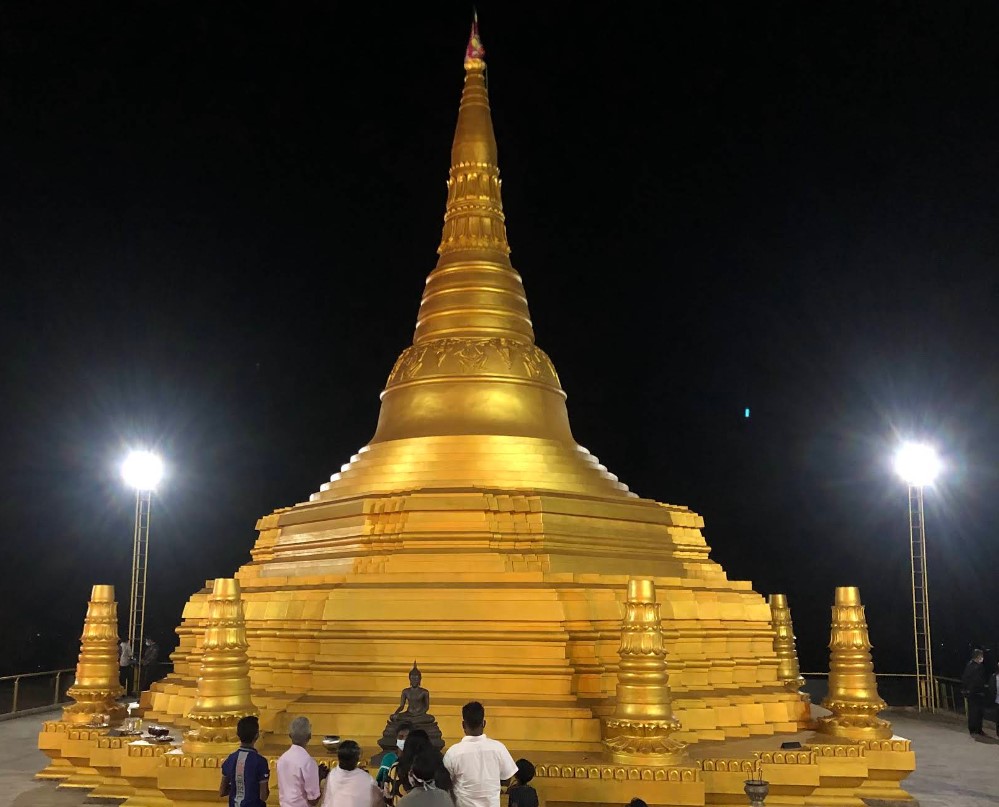
Environmental Harmony and Cleanliness
One of the most commendable things about Nelligala Temple is its environmental consciousness. The temple premises are immaculately clean, with recycling stations, plastic-free zones, and landscaped gardens that preserve local flora. The hill itself is kept green, without the deforestation common to most large-scale building activities.
It also features meditation quiet zones and benches under trees, showing concern for both human well-being and ecological balance.
Accessibility and Facilities
Despite being on a mountain, Nelligala is quite accessible: From Kandy: 30-minute drive via Kurugama Road or Muruthalawa Road. By tuk-tuk or car: Tarred roads suitable for all vehicle types. For differently abled visitors: Ramps and well-tarred pathways provide wheelchair access to most areas.
Facilities Parking area,Toilets, Drinking water points, Small cafeteria and tea/snack stalls
Visitors are asked to be modestly dressed in light-colored clothing and respectful in their attitude, as per temple tradition.
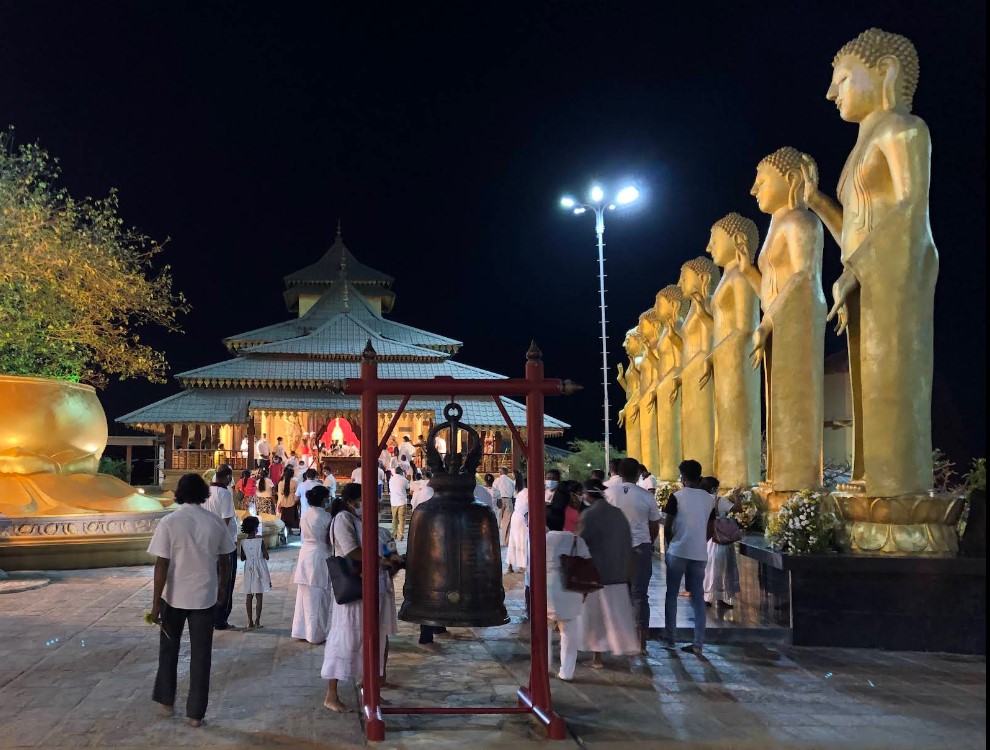
Cultural and Social Contributions
The temple also engages in charity and social work. It supports education, meditation seminars, and community outreach, particularly to children and elderly people in surrounding villages.
Interfaith events and Vesak exhibitions are held annually to promote peace and harmony among different religious groups.
A Temple for the Future
Unlike ancient temples with centuries of tradition, Nelligala represents the future of Sri Lankan Buddhist centers. It successfully balances:
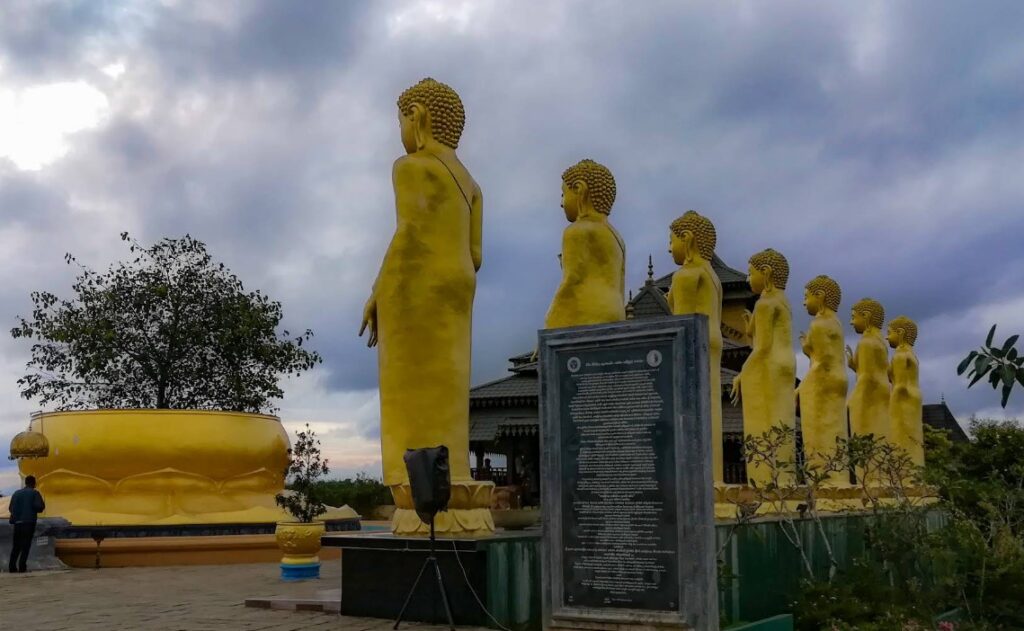
Spiritual values and openness, Architectural beauty and environmental sensitivity, Traditional Buddhist practices and modern outreach.Its popularity is maintained through social media, travel blogs, and word of mouth—-
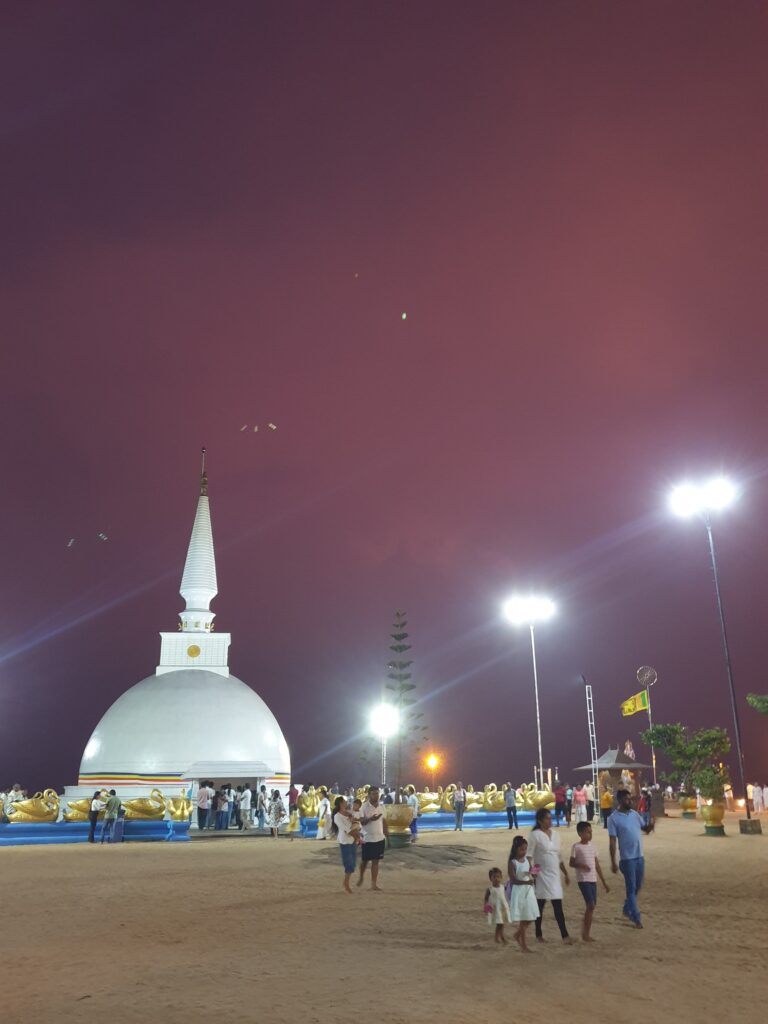
drawing not only local pilgrims but foreign tourists seeking spiritual tourism opportunities.
The Nelligala International Buddhist Center is a shining example of how religious sites can be modernized to meet current needs without sacrificing essential values.
Set against the backdrop of mist-covered hills and gilded colors, it offers itself as a sanctuary for meditation, prayer, and inner peace. Whether you are a practicing Buddhist, a culture vulture, or just someone who appreciates breathtaking views, Nelligala provides a deeply meaningful and aesthetically pleasing experience. In a world often controlled by speed, noise, and distraction, Nelligala Temple is a testament to the enduring power of silence, beauty, and religious reflection.
Where Is Nelligala Temple?
Nelligala International Buddhist Center is located in Muruthalawa, about 13 km west of Kandy, in the Central Province of Sri Lanka. It’s built on top of Nelligala Mountain, offering breathtaking panoramic views.
How to Get There
From Kandy
This is the most common and convenient starting point.
By Tuk-Tuk:
- Duration: 30–40 minutes
- Cost: LKR 1,500–2,000 (one way, negotiable)
- Available at Kandy city, train station, or hotels.
By Car or Taxi:
- Route: Kandy → Muruthalawa Road → Nelligala Temple
- Duration: 30–35 minutes
- Use Google Maps or ask locals for directions. The roads are in good condition and well-marked.
By Bus + Tuk-Tuk:
- Take a local bus from Kandy to Muruthalawa.
- From there, take a tuk-tuk or walk (around 3–4 km uphill).
- This is a budget option, but the last stretch may be steep.
From Colombo
You need to get to Kandy first.
By Train:
- Take the train from Colombo Fort to Kandy (2.5–3.5 hours).
- Then follow the Kandy to Nelligala options above.
By Bus:
- Take an AC bus or intercity bus from Colombo to Kandy.
- Travel time: 3–4 hours.
By Car:
- Colombo → Peradeniya → Muruthalawa → Nelligala
- Duration: 3.5–4.5 hours depending on traffic.
From Peradeniya
If you’re near Peradeniya (University town):
- Travel via Kiribathkumbura → Muruthalawa.
- About 25 minutes by tuk-tuk or car.
Important Tips
- Best time to visit: Morning (before 10 AM) or late afternoon (after 3 PM) for cooler weather and better views.
- Dress modestly (cover shoulders and knees).
- No entrance fee, but donations are welcome.
- Parking available at the top.
